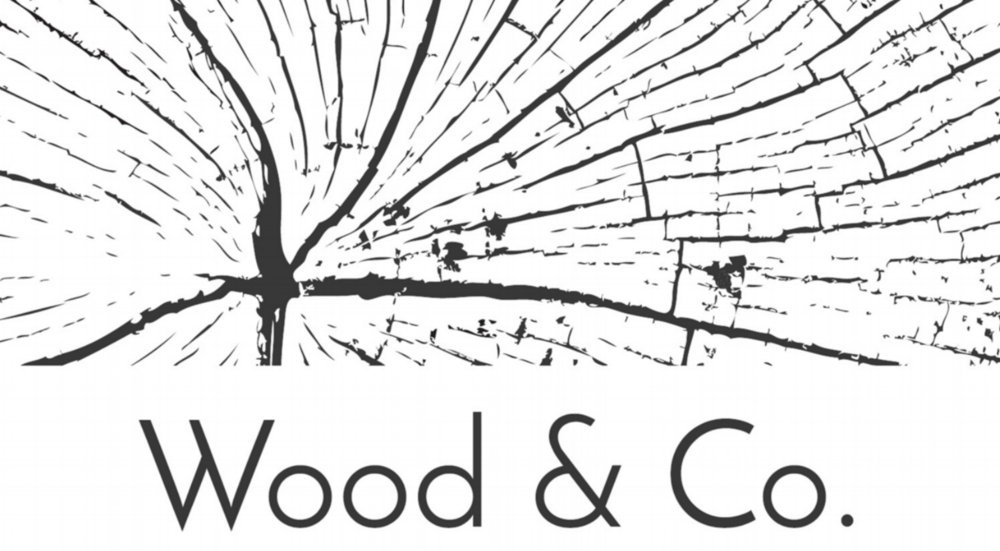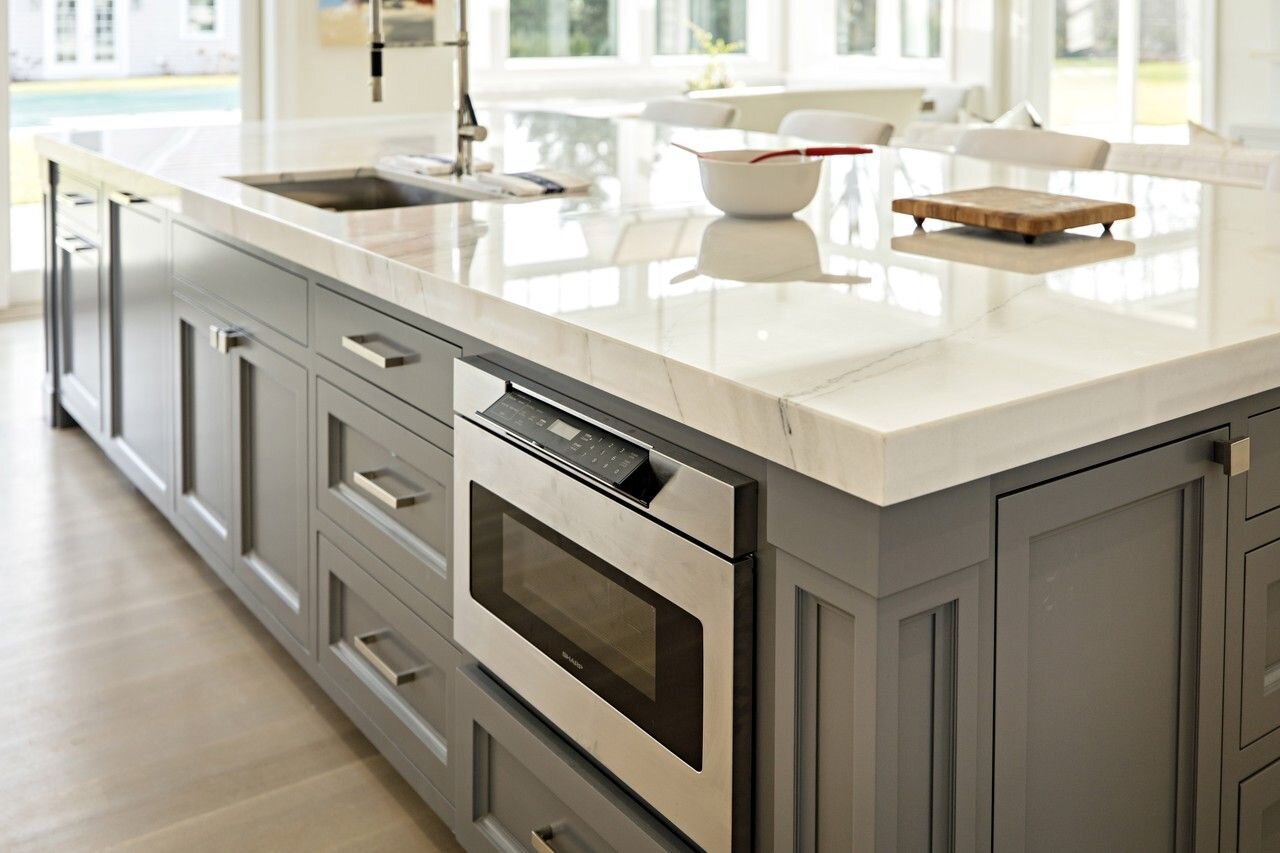Cabinets make up the visual bulk of our kitchens. It’s what our friends and family first see and ultimately remember about our kitchen. This means that if we want to spruce up our aging kitchens, the primary factor to consider is the cabinetry. This is when we have to decide, should we reface, refinish or replace kitchen cabinets?
Refacing vs Refinishing Cabinets
If you’re looking to update the look of your kitchen, but balk at the thought of fully replacing everything, then you should consider refacing or refinishing your cabinets instead.
What is Refacing?
Sometimes also called “resurfacing”, the process of refacing your cabinets involves taking out drawer fronts and cabinet doors to replace them with new ones –often in a new style. It’s less drastic than an all-out replacement as you’re only swapping out the “face” of your cabinetry, hence the term. The existing cabinet structure is retained, and simply covered with a laminate or veneer to match the new doors and drawers.
There are plenty of advantages to refacing cabinets. In terms of costs, it can save you about 30 to 50% the cost of a full replacement. As you’re replacing your cabinet faces, there are plenty of door styles and finishes for you to choose from to give your kitchen a new look. It’s also an eco-friendly way to update your cabinetry as you’ll only be replacing the doors and drawer fronts. Everything else is retained, thus producing less waste bound for the landfill.
There are disadvantages to consider, as well. If you intent to use wood veneers, these may require additional work such as staining and varnishing. Also because the cabinet boxes aren’t changed, any complaints you have about lacking shelves won’t be resolved. Those can be added in, of course. However, the added costs may just negate your initial savings and your refaced cabinets will cost about as much as a completely new one.
What is Refinishing?
In contrast to refacing, when refinishing cabinets, you keep all the existing components and change the color. This is done by stripping away the existing finish on the wood, then applying a new stain or coat of paint.
If you already like the current style of your cabinet doors, and just want to change the color, then opting to refinish can make more sense. It can also be the cheapest option, saving you about 60 to 70% the cost of completely replacing everything. If you have the skills and knowledge, it’s also the simplest DIY option. Lastly, it’s even more eco-friendly than refacing as you’ll be retaining all your existing cabinetry.
On the other hand, not all cabinets are candidates for refinishing. Many cabinets today have laminate fronts, which can’t be stained or painted over. Even if you strip off the laminate facing, if your doors are made of medium density fiberboard (MDF), they can’t be stained to look like wood. Even if your existing cabinetry is made of solid wood, it’s still not an automatic pass. Some wood species such as oak will show their grain even when painted. If this isn’t to your tastes, then you may have to reconsider your options.
When to Replace Cabinets
Refacing and refinishing cabinets, unfortunately, doesn’t work for all kitchens. Even when we want to cut as much costs as possible, sometimes it just makes more sense to replace them altogether. There are scenarios where it’s more costly or outright impossible to reface or refinish kitchen cabinets.
Irreparable Damage
Cabinets experience a heavy beating every single day. They are exposed to various elements that can wreak havoc on them such as water, heat, and steam. If your cabinets don’t open or close properly, then the cabinet structure may have swollen or warped from water damage. There also other obvious signs such as laminates peeling off or discoloration in the wood.
There’s also the problem of various wood-eating bugs. These can destroy your cabinets from the inside and compromise the structural integrity of your cabinets. Carefully inspect your cabinetry. If you see tiny holes, tunnels, or bore dust, then your cabinets may be infected.
Moldy Cabinets
Mold is often caused by water getting to your cabinets, most likely through a leak. While small amounts can be easily cleaned up, but when left unchecked, it can compromise the integrity of your kitchen cabinets. Aside from that, large amounts of mold can be hazardous to your family’s health, and it may make more sense to just change out your cabinets.
Low Quality Cabinets
Especially now that low-cost ready-to-assemble kitchen cabinetry is commonplace, you might have moved into a home that’s equipped with low-grade cabinets. As you may have guessed from the previous points, structural integrity is an important factor to consider when refacing or refinishing. Low quality cabinets won’t be able to support re-drilling for new hardware. While reinforcing it possible, it’s likely more cost effective to replace your cabinets altogether and have them last for many years.
New Kitchen Layout
Refacing and refinishing make the most sense when you only want to change the outward appearance of your cabinetry. But if you’re annoyed at the current kitchen layout and want to completely redesign everything, then it’s better to replace your cabinets. New cabinets will give you greater control over the configurations, door swings, number of shelves, and many other functional aspects of your kitchen.
Should I Reface, Refinish, or Replace?
When deciding which of the three options to choose, there are various considerations to keep in mind. First step is to evaluate our existing kitchen. Are the cabinets worn out? Do you like the current layout? Then we have to consider what changes we want to make. If you’re going to add any new appliances or equipment, check if your intended cabinet changes will match with it. Consider the style and see if it will match with the rest of your home. There’s also the issue of costs. Little things add up, and if you’re only saving 10% by refacing your cabinets, then a full replacement might be more worth it in the long run.
Ultimately, there’s a lot that goes into updating your kitchen’s look than you might think. For the best results, consider consulting with a professional. Together, you can decide what’s right for you and your kitchen.
Thank you for visiting Wood and Co.










